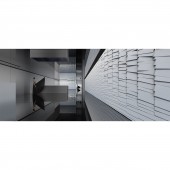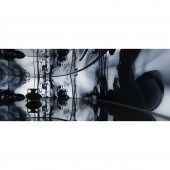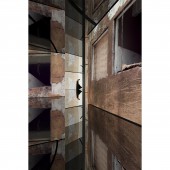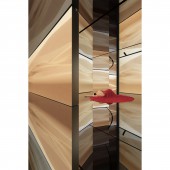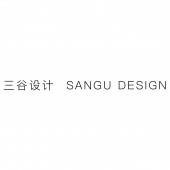Times Pavilion Exhibition by Sangu Design Guangzhou Co. Ltd. |
Home > Winners > #114447 |
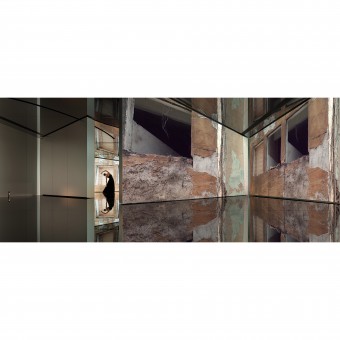 |
|
||||
| DESIGN DETAILS | |||||
| DESIGN NAME: Times Pavilion PRIMARY FUNCTION: Exhibition INSPIRATION: Most of the previous space designs were static, conceived and planned forinvariability. In this design, the designer tries to break the restricted space form, and create a human dependent circulation in the limited space of the Times Pavilion. UNIQUE PROPERTIES / PROJECT DESCRIPTION: In this project, through the linkage of the track, machinery and program, the designer switches the moving trail of the wall back and forth to activate the whole space. In this brand new mode, viewers feel they have entered a different space, where they have a real sense of life. OPERATION / FLOW / INTERACTION: Through the linkage of the track, machinery and program, the designer switches the moving trail of the wall back and forth to activate the whole space. In this brand new mode, viewers feel they have entered a different space, where they have a real sense of life. PROJECT DURATION AND LOCATION: The project started in July 2018 in Gunang Zhou, China and finished in March 2020. FITS BEST INTO CATEGORY: Interior Space and Exhibition Design |
PRODUCTION / REALIZATION TECHNOLOGY: The screens, from shallow to deep, demonstrate the development history of Times China. The high-tech display mode, to some extent, can reduce the waste of resources in physical presentation, and update information in real time. The pavilion will be used in a sustainable way to realize the concept of green environmental protection. SPECIFICATIONS / TECHNICAL PROPERTIES: In addition to breaking the pattern of traditional space, the designer subverts the physical relationship between space and furnishings. The spatially movable wall is composed of giant LED display screens, which can be folded flexibly. Taking the human movement track as the core logic and the spatial circulation as the leading factor, the designer aims to create a unique panoramic experience. TAGS: People, Brand, Exhibition, Space, Culture RESEARCH ABSTRACT: Times China, an enterprise involving the urbanization of China, has launched a series of celebrations and commemorative activities on the occasion of its 20th anniversary, in particular in the creation of the Times Pavilion. Based on the interpretation of the Times China brand, the designer puts forward the spatial concept of apocalypse, extracts the three keywords of space , matter and energy , and further gives a design response to this spatial concept. CHALLENGE: The designer need to weaken and hide the design, which not only makes functional arrangement, but also places the viewers in the space-time relations, who, through the immersive narrative space, are stimulated to have more thought and return to the humanism. ADDED DATE: 2020-12-14 01:15:24 TEAM MEMBERS (1) : Teng Gu, Rui Hua Chen IMAGE CREDITS: Teng Gu |
||||
| Visit the following page to learn more: http://www.guuuuuu.com | |||||
| AWARD DETAILS | |
 |
Times Pavilion Exhibition by Sangu Design Guangzhou Co. Ltd is Winner in Interior Space and Exhibition Design Category, 2020 - 2021.· Press Members: Login or Register to request an exclusive interview with Sangu Design Guangzhou Co. Ltd.. · Click here to register inorder to view the profile and other works by Sangu Design Guangzhou Co. Ltd.. |
| SOCIAL |
| + Add to Likes / Favorites | Send to My Email | Comment | Testimonials | View Press-Release | Press Kit |

